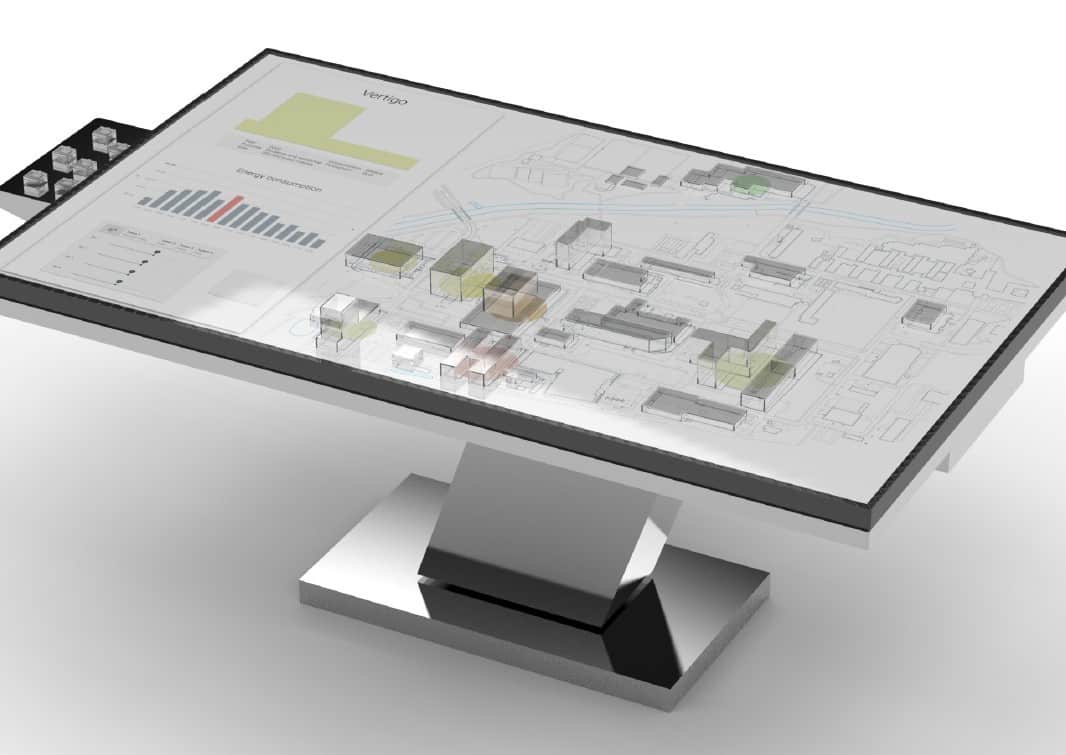
An interactive model that shows the consequences of sustainable energy on the TU/e campus. Team RED wants to use their tool to support policymakers in decisions on the construction of, for example, solar panels or a wind turbine. The student team at Eindhoven University of Technology (TU/e) wants to speed up the energy transition process.
There are various forms of sustainable energy available, such as solar panels, heat pumps, wind farms or heat networks. Not all forms are equally suitable for use in a specific building. “With our interactive model, we can quickly show what the energy consumption is in a specific building. This also allows us to show what the consequences are when, for example, solar panels or a heat pump are connected,” explains Sjoerd Pernot, co-founder of Team RED. “For instance, think about the amount of money that can be saved in this way.” The first scale model used by the team is based on the TU/e campus. “The scale model also shows users what the consequences of this sustainable solution are for the rest of the campus.
The scale model consists of a touchscreen monitor with physical buildings on it. By using the touchscreen to click on a building, users are able to request more information about a building. In addition, they are able to add sustainable solutions to buildings with the help of small tokens. Such a token represents a solar panel, for instance. The rest of the scale model instantly shows the consequences for the building and the entire campus. This allows users to immediately see whether the nearest power cables are powerful enough to be able to install solar panels. There are several aspects that need to be taken into account. “The scale model lets users try out different scenarios in a very accessible way, and ultimately choose the best option,” says Pernot.
Complete overview provides added value
That’s why the scale model provides added value according to Pernot. “Graphs are often used to show the results of different technologies on a particular building, but these are difficult to interpret. By using our model, users can see immediately what the consequences are.” The scale model is able to demonstrate this not only for solar panels, but also for other sustainable energy sources such as wind turbines.
The student team wants to use the scale model to encourage discussion on sustainable energy. “The results of sustainable solutions are presented in a relatively straightforward way. In this way, people with fewer technical skills are also able to join in the discussion,” says Pernot. “Someone who doesn’t know much about electrical engineering, for example, may not realize that the previously mentioned electricity cables that are in the vicinity, must have a particular amount of capacity in order to be able to install solar panels. That’s what our scale model shows right away.”

Dutch Design Week
During the Dutch Design Week (DDW) the students presented the first prototype of the model of the TU/e campus. “We were able to buy a first touchscreen and finished the demonstration version of the software”, says Ruben Lathuy, team capain of Team RED. The reactions were generally positive. “We also received very valuable feedback from a number of visitors. As a result of meetings during the DDW, we even had contact with various interested visitors to see if we could do something for them in a future project.”
In order to further develop this first prototype, feedback from the Housing Department at Eindhoven University is very important to the team. “That way, we can make the scale model even better in our next assignments.” The students receive supervision from TU/e innovation Space. “We have a weekly meeting with our regular supervisor. In addition, we can always turn to other student teams and start-ups to ask questions,” Pernot says. “We all run up against the same things, so it’s nice to be able to help each other.”
From campus to community
Team RED currently focuses primarily on campuses of universities or companies, yet also wants to look at the application of the scale model in the future in e.g. residential areas. “The social interaction within a neighbourhood is very different from that on a campus. Our model would be a great way to get residents and the municipality to talk to each other about sustainable energy.” The team is in dialogue with a party that wants to look at the application in a neighbourhood. However, various new aspects, such as privacy, will be discussed. A market research will show whether a translation of the tool into the application for neighbourhoods is a wise decision.
The team is already talking to the administrators from two other campuses about creating another scale model. The students also want to use the market research to look for new potential customers. Only when the first model is completely finished, do they start looking at the possible commercialisation of the product. “We want to continue to improve this tool and ensure that more and more people benefit from it,” says Pernot. “At the moment, we consider it particularly important to contribute to the energy transition process by helping others in their decision-making around it.”

